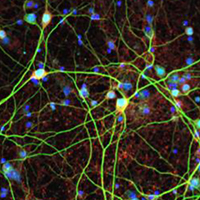 Smart Citations
Smart CitationsSee how this article has been cited at scite.ai
scite shows how a scientific paper has been cited by providing the context of the citation, a classification describing whether it supports, mentions, or contrasts the cited claim, and a label indicating in which section the citation was made.
Super-resolution study of PIAS SUMO E3-ligases in hippocampal and cortical neurons
The SUMOylation machinery is a regulator of neuronal activity and synaptic plasticity. It is composed of SUMO isoforms and specialized enzymes named E1, E2 and E3 SUMO ligases. Recent studies have highlighted how SUMO isoforms and E2 enzymes localize with synaptic markers to support previous functional studies but less information is available on E3 ligases. PIAS proteins - belonging to the protein inhibitor of activated STAT (PIAS) SUMO E3-ligase family - are the best-characterized SUMO E3-ligases and have been linked to the formation of spatial memory in rodents. Whether however they exert their function co-localizing with synaptic markers is still unclear. In this study, we applied for the first time structured illumination microscopy (SIM) to PIAS ligases to investigate the co-localization of PIAS1 and PIAS3 with synaptic markers in hippocampal and cortical murine neurons. The results indicate partial co-localization of PIAS1 and PIAS3 with synaptic markers in hippocampal neurons and much rarer occurrence in cortical neurons. This is in line with previous super-resolution reports describing the co-localization with synaptic markers of other components of the SUMOylation machinery.
Supporting Agencies
This work was supported by Brightfocus Grant A2019296F and a grant from the Fondo di Beneficenza-Gruppo Intesa Sanpaolo to L.C.How to Cite

This work is licensed under a Creative Commons Attribution-NonCommercial 4.0 International License.
PAGEPress has chosen to apply the Creative Commons Attribution NonCommercial 4.0 International License (CC BY-NC 4.0) to all manuscripts to be published.








